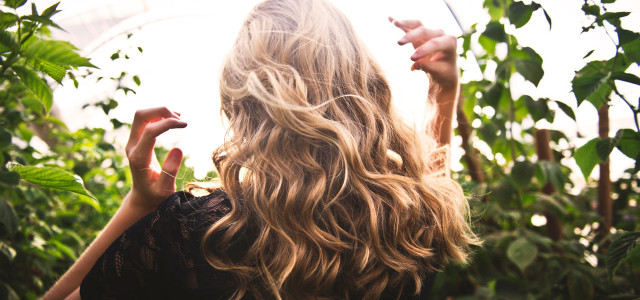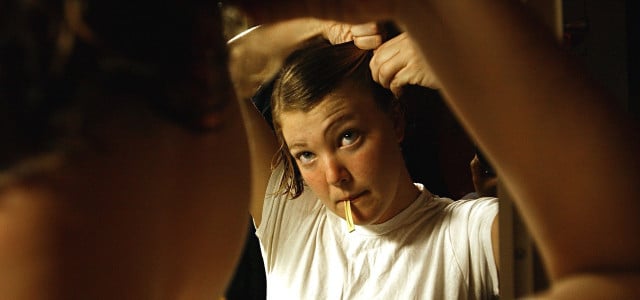No poo shampoo is an alternative to washing your hair frequently with traditional chemical-laden shampoos. The no-shampoo method is healthy, natural and leaves your hair just as clean as regular shampoo.
We put our hair through a lot. With all the synthetic chemicals we use and how often we wash, condition, color, straighten and dry it, it’s almost a miracle that we have any left at all. Furthermore, our hair and scalp actually become accustomed to rough treatment. So, we wash with chemical shampoos even more frequently to get rid of excess oil buildup on the scalp, which is produced in response to over-cleansing. Does that sound circular to you? What if, instead of getting rid of the oil, we got rid of the chemicals? That’s what no-poo shampoo and the no-shampoo method address.
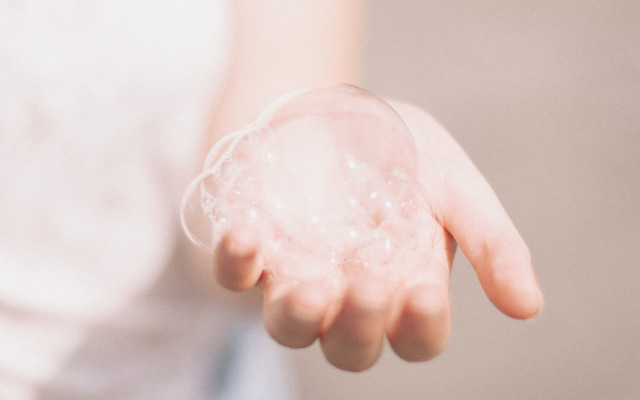
The no-poo method has grown in popularity over the past few years, and it’s aimed at breaking the daily shampoo cycle. No-poo shampoo is an all-natural shampoo method of interest among bloggers and celebrities going back to 2014. Today, however, no poo is trending all over the US.
All-natural no-poo shampoo promises shiny, conditioned and vibrant hair that isn’t oily or dry. This hair-care method eliminates the need for harmful chemicals often found in conventional shampoos by using either all-natural ingredients, pure water or even the most radical of no-poo approaches: not washing at all.
No Poo Shampoo: Why Should I Stop Using Conventional Shampoo?
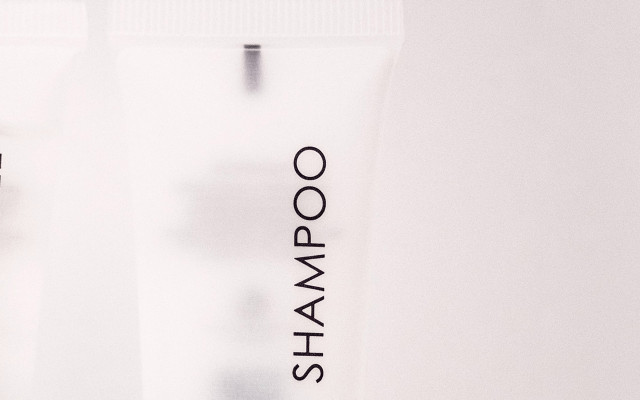


Conventional shampoos often contain harsh chemicals that can leave your hair and scalp in bad shape. The usual culprits include surfactants (surface-active agents), perfumes and silicones, the latter two of which have been widely criticized in recent years. As a result, many new shampoos without silicone are now sold in stores around the country.
It’s getting easier to say no to products laced with silicones or perfumes, and this is a step in the right direction. However, there are other common shampoo ingredients just as effective at irritating your hair and scalp. Surfactants, for example, can put your scalp’s natural pH value out of balance. When it comes to commercial shampoos, the rule is: The more often you wash, the oiler your hair will become.
Consumers aren’t only making the switch from conventional shampoos to more natural shampoos or no-poo shampoos because they’re better for your hair. Organic shampoos are also kinder to the environment. They are made without chemicals known to pollute the environment either through the production process itself or by entering our ecosystems via wastewater.
Furthermore, people who exchange shampoo for the no-shampoo method entirely save a considerable amount of plastic packaging from landing in the trash. Even more, die-hard no poo fans can go without producing any waste at all.
You may also enjoy: DIY Dry Shampoo: Homemade Shampoo for Blond, Brunette and Black Hair
No Poo: The Alternative to Conventional Shampoos
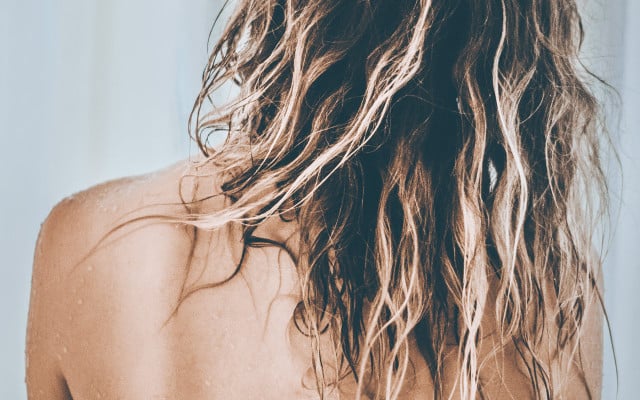


As varied as the long list of no-poo shampoo options may appear, they all share one common goal: To help regulate your hair’s natural production of sebum. Sebum is an oily, waxy substance that serves as your scalp’s natural conditioner.
When hair dries out, the body’s sebaceous glands are triggered to produce extra sebum. Conventional shampoos rob your hair of this substance and essentially send your sebaceous glands into a panic, resulting in the overproduction of sebum. In essence, your hair reacts to being deprived of its naturally produced oil by making even more. Since nobody likes greasy, oily hair, we shampoo our hair constantly to keep it looking how we want it. This dependency feeds into the vicious cycle of daily shampoo use, one that you can break with the help of the no-shampoo method.
No-poo shampoo balances your hair and scalp by mending the damage caused by artificial chemicals contained in conventional shampoos. Yet, everybody’s hair is different. You may need to try out a few no-poo shampoos before you find the right one for you.
Many fans of the no-poo method make their own shampoo using natural ingredients. It takes time, but pays off down the road.
You may also enjoy: Tutorial: Natural DIY Body Wash for Beginners
Popular no-poo shampoos
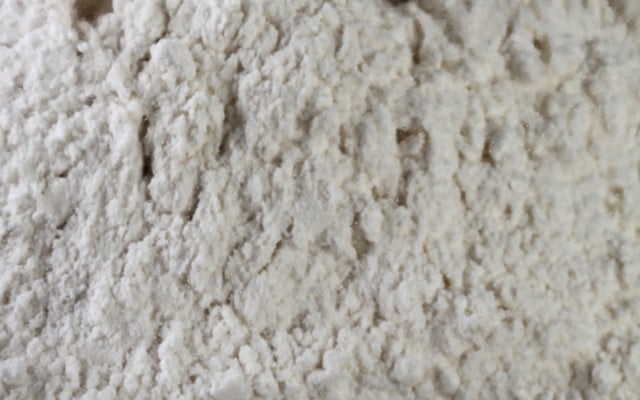


Bentonite clay: No-poo shampoo fans often use medicinal clays like bentonite for hair masks. Bentonite clay is an absorbent natural clay with a fine, soft texture. It is formed from aged volcanic ash and has been used for centuries to detoxify the body, ease digestion and improve skin tone. When mixed with water, it forms a negatively charged clay sponge which draws out positively charged toxins and impurities like dust and dirt from your hair.
In a way, this no-poo shampoo is essentially a hair detox — it kills bacteria, and gets rid of excess oils and dandruff. Yet, this no-poo option is far less aggressive than conventional shampoos and maintains your scalp’s natural oils. Plus, one package of bentonite clay can last up to six months when used regularly.
Ingredients for bentonite clay no-poo shampoo:
- 1/4 to 1/2 cup of water (or enough to form a runny paste-like consistency)
- 1 tbsp. bentonite clay
- 1 tsp. coconut oil (optional)
- 1 tbsp. apple cider vinegar (optional)
The above ingredient measurements are intended for single use. You can increase the ingredient amounts if you like. Store it in a resealable glass jar for your next no-poo wash.
To apply this no-poo shampoo, massage it into your wet hair and let sit for 3-5 minutes before rinsing. That’s it! Depending on your hair type, you may only need to wash your hair every other day. After you’ve used this no-shampoo method for a while and your hair’s oil production has returned to normal, try washing only once or twice a week.
You can find bentonite clay in some supermarkets and online:
- Bentonite Clay Powder from Lone Star Botanicals found on Amazon**
- Aztec Premium 100% Natural Organic Calcium Bentonite Clay found on Amazon**
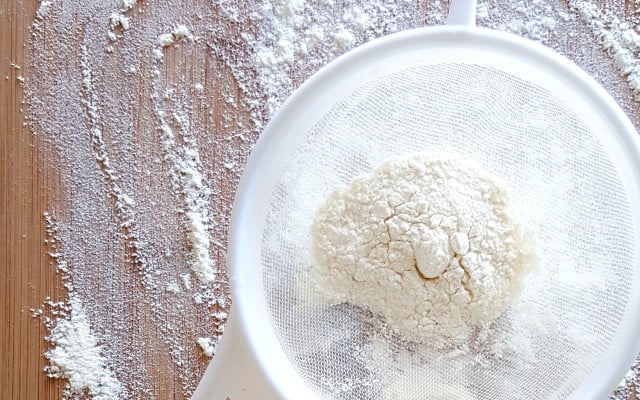


Rye flour: This no-poo shampoo method is a tried-and-tested favorite. Rye flour is packed with vitamins, minerals and nutrients and is well-suited for a variety of hair types. If you choose to take this no-poo route, use flour that is as fine as possible — otherwise, the mixture will clump up when you wash.
Mix 4-5 tablespoons of rye flour with water and massage it into your hair. Whatever you do, be sure to stick to rye flour. It’s an excellent no-poo shampoo because of its gluten content. Gluten allows the flour to mix with water without clumping or turning into a dough. We recommend whole grain rye flour due to its high mineral, amino acid and vitamin count.
Coffee: A handful of veteran no-poo bloggers swear by another all-natural no-poo shampoo mix: rye flour and coffee. The caffeine contained in coffee supports blood circulation to your roots. Coffee is also a great no-poo choice for beginners, as coffee gets unwanted smells out of your hair.
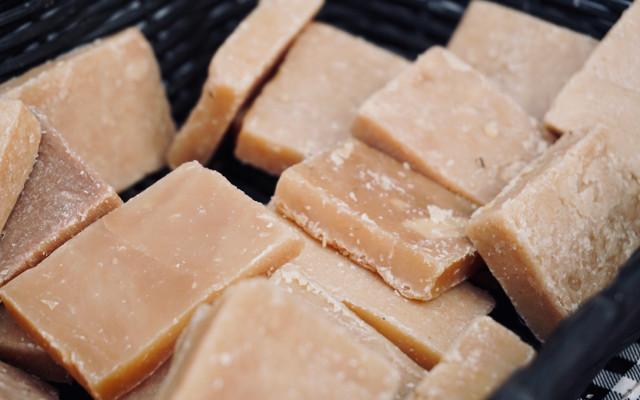


Hair soap bars: Wash your hair entirely without chemicals with a no-poo hair soap. Look for shampoo bars that contain all-natural ingredients and are pH neutral. Hair soaps foam a little bit and are thus great for no-poo beginners.
When it comes to soap bars or shampoo bars, the oils contained within should be made with all-natural ingredients and certified organic. Luxury hair soaps don’t count, as they’re merely commercial shampoos in bar form. Although they don’t contain silicone, they usually still pack synthetic surfactants into the ingredients list. For the best results, make your own DIY shampoo bars.
If you’d rather buy instead of DIY, check out these popular all-natural organic shampoo bars:
- J.R.LIGGETT’S All-Natural Shampoo Bars found on Amazon**
- Ethique Eco-Friendly Solid Shampoo Bar for Dandruff Touchy Scalps found on Amazon**
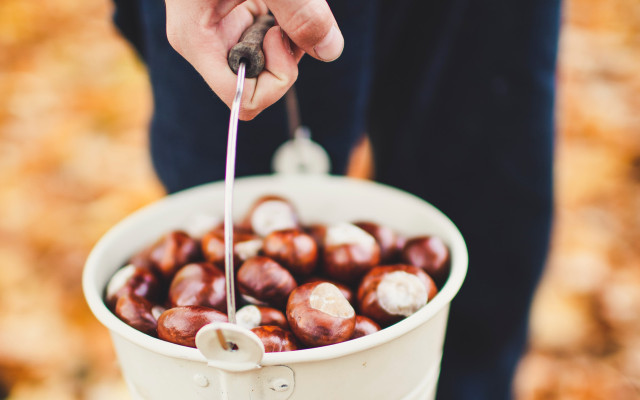


Chestnuts: It’s also easy to make a no-poo shampoo using horse chestnuts. For this no-poo recipe, you’ll need 20 horse chestnuts, water, a thinly sliced unseeded apple and a small empty shampoo bottle. You’ll also need a thickener. You can use either four tablespoons of cornstarch or three tablespoons of flaxseeds to give your no-poo shampoo a gel-like consistency.
To get started, toss the finely crushed chestnuts and other ingredients into a pot and bring them to a boil. Cover and let simmer at medium heat for 25 minutes. Next, pour the mixture through a strainer covered with a towel into a second pot, and wring the towel out thoroughly. Now you can add the thickening agent. Stir thoroughly until smooth. If you’ve chosen flaxseeds as your thickener, pour it through a strainer one more time.
Additional no-poo options include soap nuts, other medicinal clays like rhassoul and koalin clay, cocoa and the somewhat unconventional no-poo egg wash, which you can use as shampoo and conditioner once a month or so alongside regular no-shampoo methods.
Read more: Dry Scalp: These Home Remedies Help Treat an Itchy Scalp
Conditioners: The No-Poo Shampoo Alternative
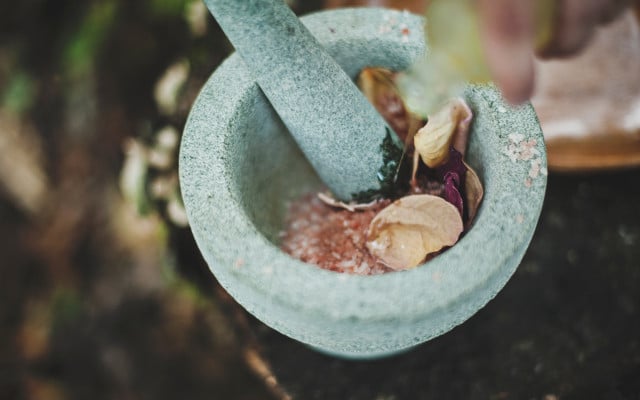


That’s right, you can go no poo for conditioning as well. Here are a couple of household tips to keep your hair from getting dull and dry:
- Protect your hair from split ends with natural oils like argan, coconut, jojoba or olive oil. Be sure to only apply oil to the ends of your hair; otherwise, you’ll be looking at massive oil buildup, and your hair will look greasy. Some fans of the no-poo method swear by aloe vera and avocado oil. Leave this special hair treatment in for a few minutes before washing with medicinal clay. Try this no-poo option out and see if it works for you!
- Use apple cider vinegar for hair care to get soft and shiny locks. Mix vinegar and water in a 1:10 ratio, work it through your hair and rinse it with ice-cold water. The cold water closes your pores and leaves your hair smooth to the touch while the vinegar neutralizes your scalp pH. Depending on your skin and hair type, you can also use apple cider vinegar with plants such as marigolds, dried rose petals, lavender or other essential oils like lemongrass, rosemary or lavender. Make sure to add oil to your hair while it’s wet — they’re absorbed better that way.
Read on: Here are three simple recipes for homemade conditioner.
No Poo: How Often Should I Wash My Hair?
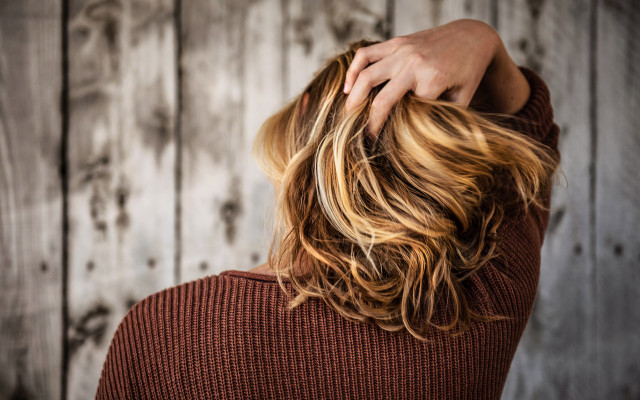


Experts suggest maintaining your ordinary hair-washing routine to give your hair and scalp time to adjust. If you wash your hair every two days or so, keep it up with your new natural no-shampoo method. After a couple of months, extend the time between washes by a couple of days. Washing less frequently gives your hair time to adjust.
For No-Poo Beginners: Organic Shampoo without Silicone
For anyone out there hesitant to make the leap to no-poo shampoo, the next best option is using silicone-free organic shampoos. They moisturize and soothe without unnecessary chemicals and are just as effective as traditional shampoos and conditioners.
Check out some healthy and organic no-shampoo method alternatives here:
- Natural Beauty Hair Care Shampoo from Maple Holistics found on Amazon**
- Silk18 Natural Conditioner from Maple Holistics found on Amazon**
We hope you’ve enjoyed these no-poo shampoo methods! If you’re interested in all-natural household and hygiene hacks, Utopia has you covered.



Read more:
- How to Use Coconut Oil for Your Hair: 3 Tips
- Greasy Hair? These Home Remedies and Tips Can Help!
- 8 Cruelty-Free Makeup Brands to Try in 2023
Do you like this post?






